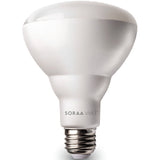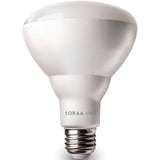Going Greener by Recycling Burnt Out Light Bulbs
Posted by Nick on for ProLampSales

One of the main benefits of replacing incandescent and halogen lighting with CFL or LED is the lower energy usage and bills that result. Even these types of bulbs burn out, making all types of light bulbs prime candidates for recycling.
Incandescent & Halogen Bulbs
The bad news is that incandescent and halogen light bulbs are not recyclable. True, the outer bulb is made of glass, but the lamps also contain metals, including the tungsten filament of a standard incandescent bulb.
The City of Seattle recommends residents throw incandescent bulbs in the garbage, explaining that, "Only glass bottles and jars can be recycled in your curbside cart or at the transfer stations. Other glass items have different melting points and must be recycled with special processes."
These types of bulbs do not contain mercury and are being phased out anyway, so recycling their components is likely more expensive than any benefits a recycling center could realize.
Mercury-Containing HID & Fluorescent
All fluorescent and many HID lamps contain mercury, so special recycling processes are required for disposing and recycling of these lamps. The EPA states that, of the millions of fluorescent lamps sold annually in the United States, the majority are improperly discarded. This includes linear fluorescent tubes and CFLs.
Locally, many cities and private businesses have set up recycling centers or collections for mercury-containing lamps. As one example, City of Chicago recommends residents take broken or burnt out CFLs to a recycling facility on the north side of the city, or drop them off at any hardware store that will acccept them.
If a CFL, fluorescent tube, or mercury-containing HID lamp breaks, there are a whole list of steps to take to ensure safety. This is the list of instructions and recommendations from the EPA on cleaning up a broken CFL.
On the positive side, manufacturers have continually reduced the amount of mercury in bulbs as technology has advanced. Fluorescent and HID bulbs with very low amounts of mercury may be TCLP compliant. If so, in some municipalities, these bulbs can be disposed of directly into the landfill. Look for the TCLP logo on the bulb or box.
LED & Solid State
LED bulbs, the newest kid on the block in the world of lighting, is a special case. LEDs can be found everywhere now, from chips inside your computer, to the digital display of your alarm clock, to the bulb in your ceiling fan, and even whole integrated panels of them in businesses and commercial settings.
LEDs do not contain mercury, so no special process is required for disposing of them. They do, however, contain electronic components which often use rare earth elements, but at such trace amounts that it is economically unviable to collect the bulbs and recycle the elements. Not only that, but a few years ago, according to LEDsMagazine, no technology existed for recycling these valuable elements anyway, although that may change in the future.
The best bet for recycling LEDs may be to check with local recycling centers to determine if they accept the bulbs. Local hardware stores may be one option, while technology/computer stores may have their own electronics recycling programs.
Featured Products (View All)
- 0 Comments
- Posted in Environment
0 Comments




